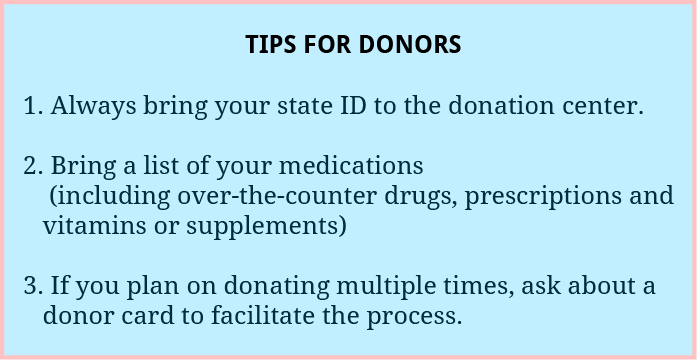Have you ever wondered what happens when you go to a blood donation drive and become a donor? Many people provide this important resource for others in need without knowing where their blood goes or what the process entails. As a first timer, you may be scared because you don’t know much about it other than you’re going to get pricked with a needle. Here is some insight into donation:
1. Donors register
According to The American Red Cross, the first step to donating blood is filling out a health history form and undergoing a quick physical. You’ll share your blood type (if you know it) as well as your travel history, any medications you are currently taking and if you have had tattoos or piercings in the last several months. All of these affect whether you can give blood, as some medications or other factors may make you ineligible.
2. The blood is collected
Next, you’ll lie on a bed and a licensed health care professional will place a needle in your arm. This needle will connect to a tube that leads to a blood bag or test tubes.
Typically, donors give around one pint of blood. The blood is stored in iced coolers until it is brought to a donation center (if you are partaking in a mobile drive), or it is brought directly to a storage area in the facility.
As for the day of the donation, once a donor gives blood they often receive a treat and sugary juice beverage to maintain proper blood sugar levels. Most people spend a few minutes laying down once the needle has been removed to ensure they do not feel dizzy or faint upon sitting or standing. Nurses attend to donors to ensure they feel good before getting up and leaving the donation area.
3. The blood is processed
Now comes the part most people don’t know much about – blood processing. This includes scanning the blood into a database and using a centrifuge to separate the red cells, platelets and plasma. Each part of the blood is tested to figure out its type and if it contains disease. Those donations that are deemed unfit for use are discarded and the facility notifies the donor of its findings. In accordance with health information privacy laws, the only people who view these results are testing staff and the individual donors.
 4. Storage and transportation
4. Storage and transportation
Donated blood that has been found healthy is stored at the donation facility until a hospital or healthcare provider requests a particular type. The different parts of the blood are kept at varying temperatures. Some parts must be frozen, and others require constant movement to prevent separation. The Red Cross keeps red cells at 6 degrees Celsius for as many as 42 days while platelets last only five days and must be agitated constantly. The organization freezes cryoprecipitate and plasma for as long as one year if necessary before it is no longer viable.
If you have further questions about donation or want to see if you are eligible, talk to your doctor.
If you found an error, highlight it and press Shift + Enter or click here to inform us.



